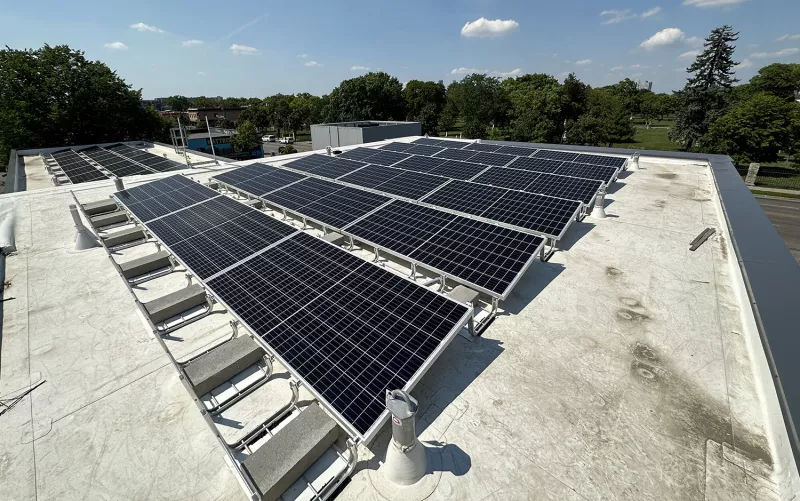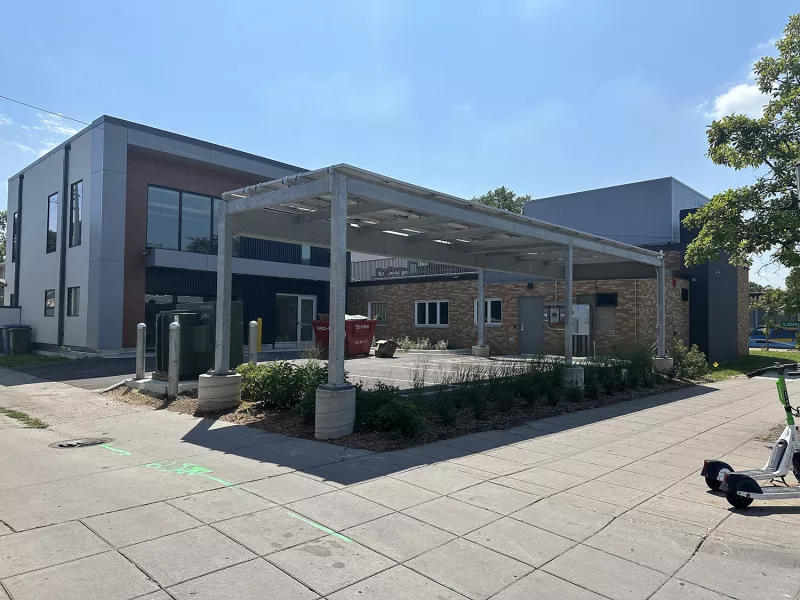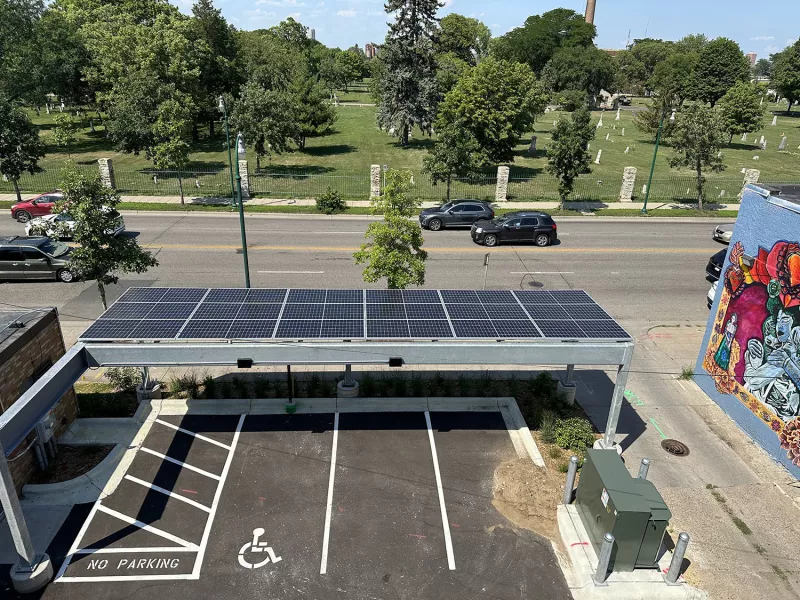
At MIGIZI, a nonprofit Native youth organization located on East Lake Street in Minneapolis, clean energy is not just a goal, it’s a reality. Thanks to their new 28.3 kW-DC solar array, MIGIZI is able to operate sustainably and pay less for their energy bills. With help from the City of Minneapolis’ Green Cost Share Program, and other various solar incentives, the array will pay for itself in less than five years.
“I’m really proud of those partners for coming through for a really well-deserving organization that serves the community and its youth,” says Bob Blake, member of the Red Lake Nation and founder and CEO of Solar Bear, the solar developer that worked with MIGIZI on the project. Blake helped MIGIZI apply to the Minneapolis Green Cost Share program, a city-wide cost-matching program which helps to pay for pollution reduction and clean energy development projects. Since MIGIZI is located in the city’s Southside Green Zone, they qualified for a higher incentive rate and received a match of almost $13,000 for the project.

What makes this project special is the impact the solar panels will have on the community, which goes way beyond financial benefits for MIGIZI. In 2020, their original location was destroyed. MIGIZI spent the last three years renovating and moving into their new building at 1845 E Lake Street. “There were a lot of moving pieces… I didn’t even know if MIGIZI was gonna have a building,” says Blake. “Once I saw those pieces start falling into place and you really saw the community and the donations start piling in, it was great… This means more to me than just another solar project.”
Antavia Paredes-Beaulieu, the Green Tech Instructor at MIGIZI, isn’t going to let their solar panels go unnoticed either. “We’re planning on implementing curriculum developed around our solar panels here,” she says, something that will fit perfectly into their Green Jobs Pathway program, which helps Native youth learn about STEM and green energy while earning money. “We’re taught that the best thing we can be is a good ancestor, and that is something that you do today. You work today for a better future for your children, whether they are biological or not,” Antavia says. In the past, Green Tech interns have made solar-powered phone chargers for people experiencing homelessness and helped to install rooftop photovoltaic systems. A new solar array on their building will only help to propel these students even further towards a future in clean energy.
For Blake and Solar Bear, this project is only the beginning of a much greater movement. “One of the things [Kelly Drummer, President of MIGIZI] wanted to show the kids was… here’s a Native American guy from the Red Lake Nation who is pursuing a career in renewable energy… you guys can do this too!” In Blake’s eyes, sustainable development and empowerment for disenfranchised communities go hand in hand. “When we think about the disparities that plague Native American and inner-city communities… If we can get individuals involved in careers like this that really provide purpose, I think that’s how we battle that stuff,” he says.

With so much recent investment into clean energy with the passing of the Inflation Reduction Act and local funds like the Minneapolis Green Cost Share program, projects like this one are springing up more and more frequently, finding ways to lift communities and to plan for a green future at the same time.






